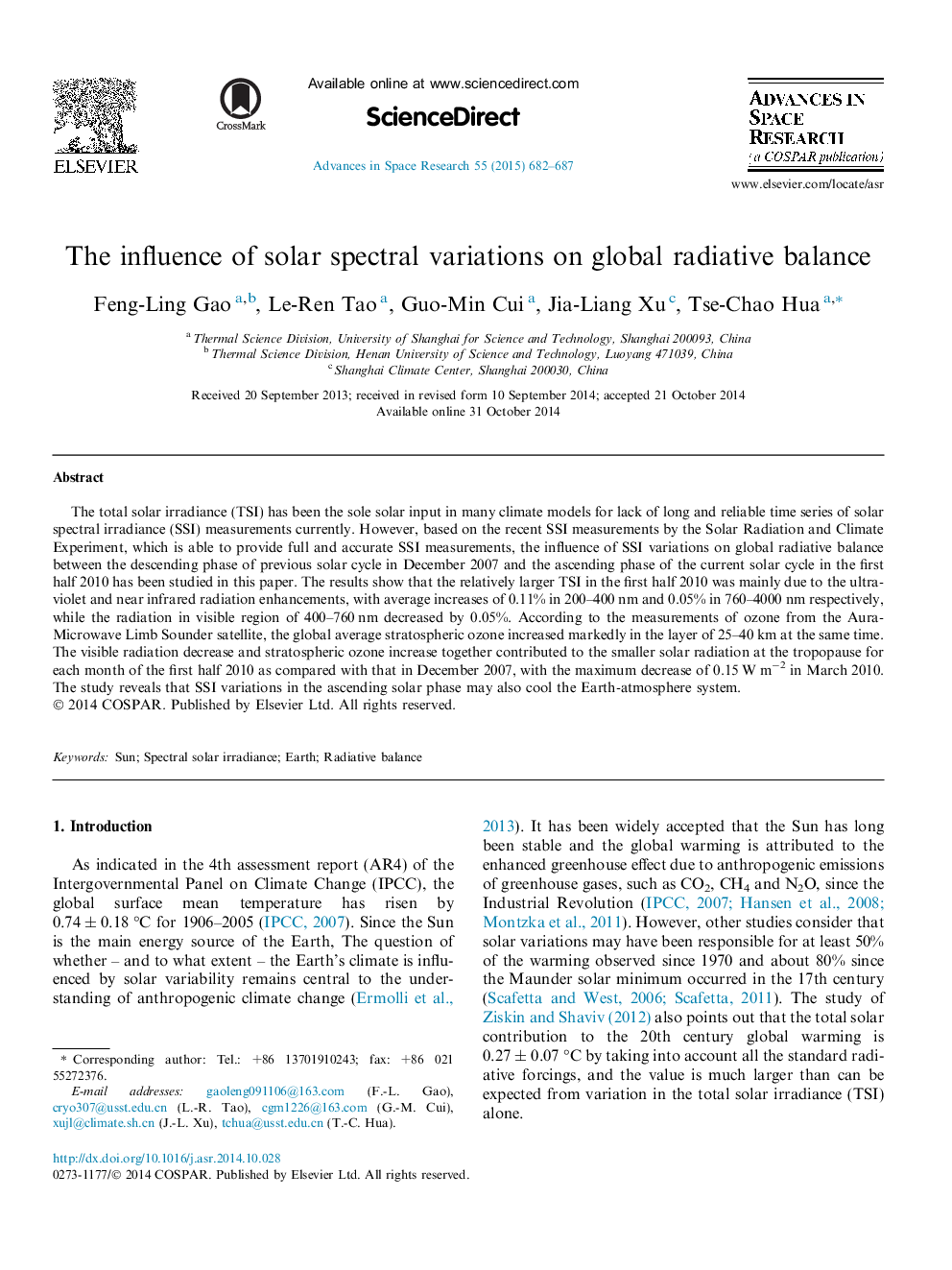| Article ID | Journal | Published Year | Pages | File Type |
|---|---|---|---|---|
| 1764310 | Advances in Space Research | 2015 | 6 Pages |
The total solar irradiance (TSI) has been the sole solar input in many climate models for lack of long and reliable time series of solar spectral irradiance (SSI) measurements currently. However, based on the recent SSI measurements by the Solar Radiation and Climate Experiment, which is able to provide full and accurate SSI measurements, the influence of SSI variations on global radiative balance between the descending phase of previous solar cycle in December 2007 and the ascending phase of the current solar cycle in the first half 2010 has been studied in this paper. The results show that the relatively larger TSI in the first half 2010 was mainly due to the ultraviolet and near infrared radiation enhancements, with average increases of 0.11% in 200–400 nm and 0.05% in 760–4000 nm respectively, while the radiation in visible region of 400–760 nm decreased by 0.05%. According to the measurements of ozone from the Aura-Microwave Limb Sounder satellite, the global average stratospheric ozone increased markedly in the layer of 25–40 km at the same time. The visible radiation decrease and stratospheric ozone increase together contributed to the smaller solar radiation at the tropopause for each month of the first half 2010 as compared with that in December 2007, with the maximum decrease of 0.15 W m−2 in March 2010. The study reveals that SSI variations in the ascending solar phase may also cool the Earth-atmosphere system.
